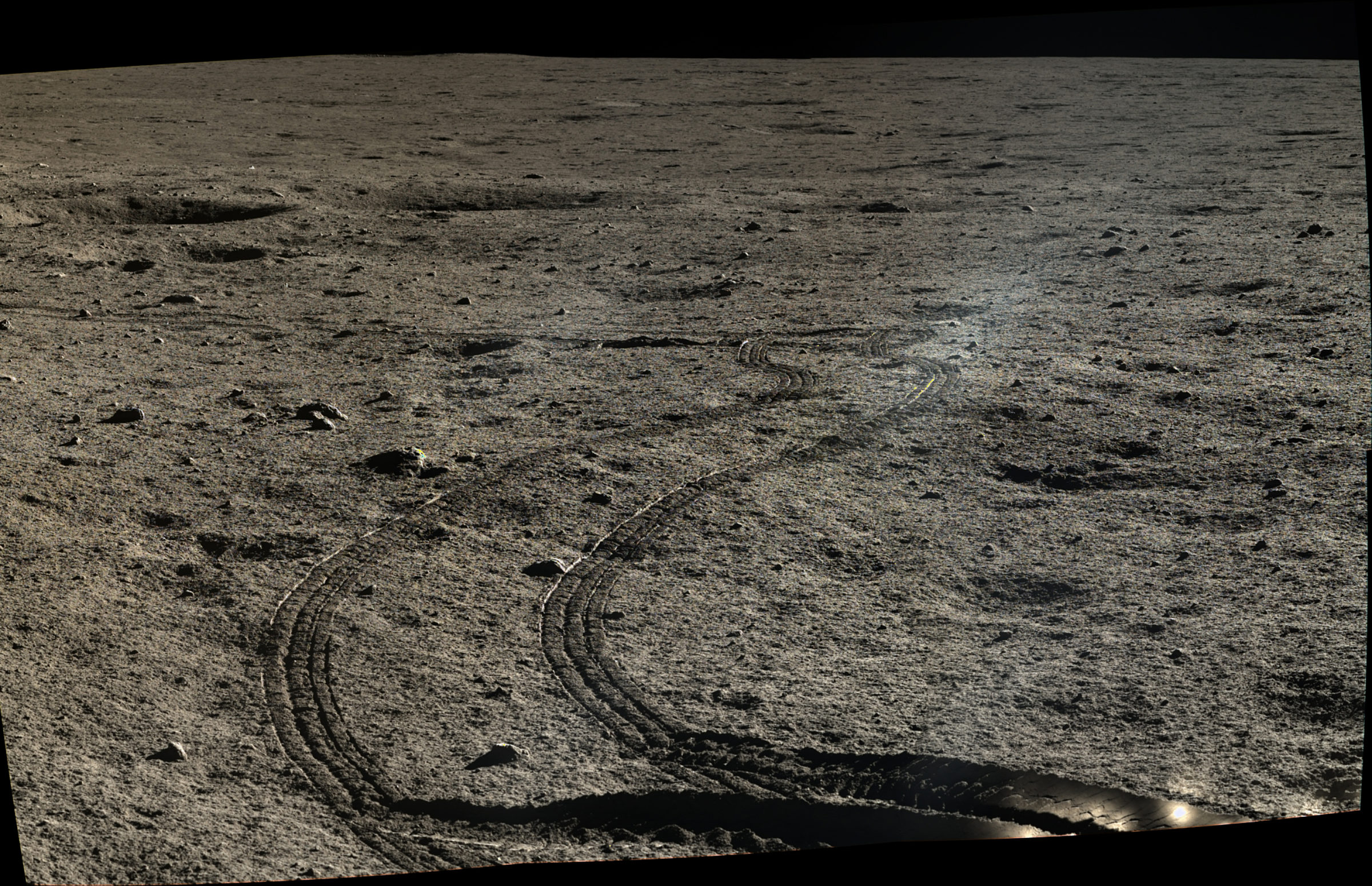Emily Lakdawalla • Jan 28, 2016
Fun with a new data set: Chang'e 3 lander and Yutu rover camera data
In a recent guest blog post, Quanzhi Ye pointed to the Chinese version of the Planetary Data System, and shared the great news that Chang'e 3 lander data are now public. The website is a little bit difficult to use, but last week I managed to download all of the data from two of the cameras -- a total of 35 Gigabytes of data! -- and I've spent the subsequent week figuring out what's there and how to handle it.
So, space fans, without further ado, here, for the first time in a format easily accessible to the public, are hundreds and hundreds of science-quality images from the Chang'e 3 lander and Yutu rover. I don't usually host entire data sets (PDS-formatted and all) but I made an exception in this case because the Chinese website is a bit challenging to use.
- Chang'e 3 Yutu rover panoramic camera (PCAM) data released as of January 20, 2016
- Chang'e 3 lander terrain camera data (TCAM) released as of January 20, 2016
And here are just a few of the goodies contained therein. You may want to keep Phil Stooke's landing site map and Yutu route map handy for reference as you look through these!







I think that last one is my favorite.
These are not the only two image data sets available, but they were all I was able to download last week, and the website has not worked at all for me this week; you need to log in to download data, and the login function is not working. But I'll keep trying. The next one I'm going to try to grab is the descent camera data set. There are also ultraviolet telescope data. As far as I can tell, there are no engineering camera data available, unfortunately, so there is not much in the way of animateable imagery just yet.
I know from publications by the Chang'e 3 team (like this one, which is a gzipped PDF file) that neither of these two data sets is complete. Both were first used the day after landing, with the first TCAM image at 11:01:38 and the first PCAM image at 12:44:50 UT on December 15, 2013. From then to March 17, 2014, PCAM obtained a total of 780 photos, operating over a total of four lunar days. TCAM, on the other hand, failed over the first lunar night; I don't know how many photos it took, in total.
So far, the data center contains 797 unique observations from TCAM, and 578 for PCAM. For both cameras, both the earliest and the last image data are not yet in the public archive. In particular, the initial PCAM 6-frame mosaic of the lander is not in the database, and the final TCAM images of Earth are also not in the database. So there are more goodies to look forward to.
Some facts about the cameras: the two camera systems are very similar. TCAM consists of a single camera, while PCAM is a stereo pair separated by 27.0 centimeters. They both have CMOS detectors, 2352 by 1728 pixels in size, with Bayer filter arrays for color. The PCAM field of view is 19.7 by 14.5 degrees. The PCAMs were sometimes used in a "panchromatic" mode, in which the images were downsampled by a factor of 2 before download, which also removes color information. Most of the observations are available as both grayscale versions (which haven't been demosaiced to turn them into color), and as color versions. The color in the PCAM images is fairly consistent, but I get weird results with some of the TCAM images.
I'm looking forward to seeing what other folks produce with these data sets. In particular, there is a lot of fun to be had with the stereo capability of the rover PCAM, which I didn't begin to play with.
Let’s Go Beyond The Horizon
Every success in space exploration is the result of the community of space enthusiasts, like you, who believe it is important. You can help usher in the next great era of space exploration with your gift today.
Donate Today

 Explore Worlds
Explore Worlds Find Life
Find Life Defend Earth
Defend Earth

